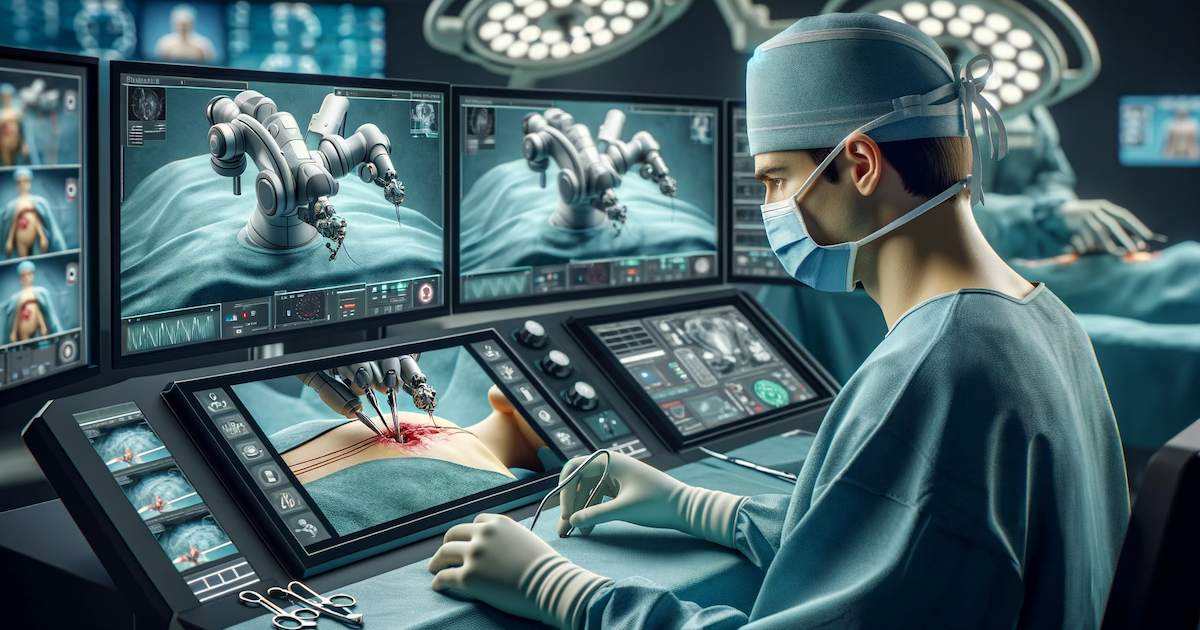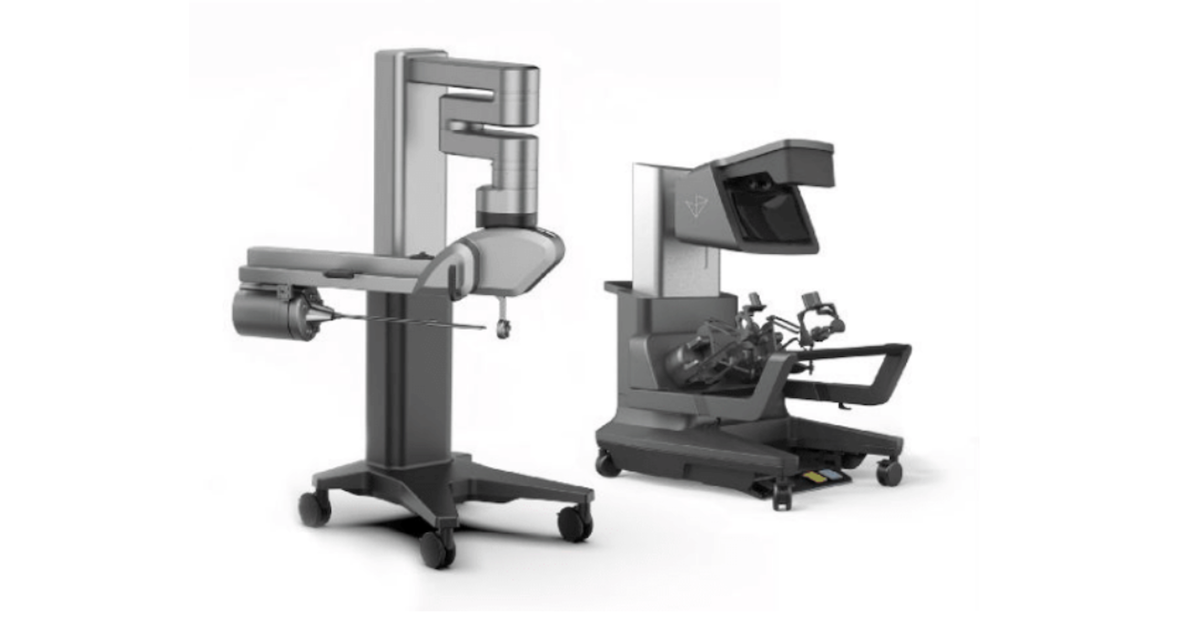
Hi Jeff, it’s fantastic that you are back. I’m very interested in news in the segments of biotech and tech. I’m interested in news about Vicarious Surgical (RBOT). I think RBOT is still 1-2 years away from product launch, so I’m waiting for news. Many thanks. All the best. — Jo
Hi Jo, thank you. And I completely agree.
The intersection of technology and biotechnology is an incredibly exciting space. It’s quite broad, as well.
For the benefit of readers, this intersection refers to companies that produce hardware for things like genetic sequencing and various forms of diagnostics. It can also include things like automated laboratory equipment that can help speed up the drug discovery process.
There are also a lot of companies leveraging recent breakthroughs in artificial intelligence (AI) as applied to drug discovery and optimization. There are even semiconductor and electronics companies that develop hardware for testing molecular compounds in an effort to speed up drug development.
There is so much opportunity right now at this intersection of tech and biotech due to advancements in semiconductors, computing systems, and AI — that makes this area ripe for compelling investment opportunities. I know I’ll be researching and writing about these opportunities at Brownridge Research.
Of course, your interest is in one of the most exciting, up-and-coming small cap tech companies, Vicarious Surgical (RBOT).
Vicarious operates in the category of robotic surgery, a field that is dominated by a $112 billion giant — Intuitive Surgical.
Intuitive is best known for its Da Vinci surgical robot, and it has been around for decades. It was a pioneer in robotic surgery and opened the path for others to follow.
But it’s a very tough business building the hardware and software to perform surgeries. And it typically takes a decade or more to go from idea to clinical trials and eventually FDA approval.
But the stakes are incredible. After all, Intuitive Surgical is now worth $112 billion, and only a tiny percentage of all surgeries are performed using robotic assistance.
This is practically a greenfield market opportunity.
A new entrant like Vicarious doesn’t even need to kick out Intuitive to win…
It can simply go after other surgical procedure opportunities and become just as large and important as Intuitive over the next decade. That’s how big the opportunity is.
Vicarious got its start in 2014 and has been making incredible progress since then…
The way that we can think about the industry is that Intuitive is a legacy player with an existing installation base of robotic systems.
Vicarious is a modern, bleeding edge version of Intuitive. It took a fresh approach to surgical robots, applied the most advanced technology, and built a system that will ultimately outperform Intuitive… and have a far better return on investment for healthcare facilities.

Above we can see the latest version 1.0 system from Vicarious Surgical.
On the left is the surgical robot, and on the right is the control console used by a surgeon.
The size of both units is quite optimal, as both can be rolled into an operating theater because they fit through normal hospital doors. This has been a major pain point for legacy systems.
Vicarious, like most small capitalization tech stocks, has suffered through the market downturn that we experienced…
I discussed what was happening with respect to the small capitalization tech/biotech market in my December 5, 2023 Ask Me Anything (AMA) issue of Outer Limits. Anyone interested in the additional background can read that here.
When small cap stocks are out of favor by institutional capital, companies that are pre-product revenue tend to be hit the hardest. And that’s the situation with Vicarious.
I’d like to use Vicarious as an example of a very real market dynamic for similar companies…
Pre-product revenue companies like Vicarious have to spend money for years on research and development (R&D) before they get to the stage of generating product revenues. They can still generate revenue from patent licensing, or from striking strategic partnerships with other industry players.
But what the market wants to see is the path toward commercialization and ultimately exponential revenue growth.
The most difficult window, however, for companies like Vicarious to get through is when small capitalization stocks fall out of favor with institutional investors. This is because valuations collapse as institutional capital leaves the market. This results in irrationally low valuations.
Companies are then faced with two possible courses: raise capital at low valuations or begin cost cutting to extend the company’s runway in hopes of making it to better market conditions. The answer is usually both for most companies.
With that said, the goal is to raise the least amount of money as possible. Why? Because when a company is undervalued, it has to give up a larger percentage of ownership for less money.
Said another way, it is a suboptimal time to raise capital when a company is undervalued. Ideally, a company would want to raise money when valuations are high, which results in less dilution to existing shareholders.
Because of this dynamic, small cap companies tend to aggressively cost cut in order to minimize the amount of money they will raise through issuing new shares.
And that’s exactly what Vicarious Surgical has been doing over the last couple of years.
Vicarious raised just $47 million in the third quarter through an equity offering, and had $110 million of cash at the end of that same quarter. It’s cost cutting efforts will result in a cash burn of between $40-55 million in fiscal year 2024.
The thinking is that the combined raise and cost cutting efforts will carry the company until institutional capital starts to flood back into the most exciting small capitalization growth stocks.
Vicarious would certainly fit that category.
When that happens, and it will happen, valuations tend to expand quickly, creating a far better environment for raising capital with less dilution.
The major downside, however, to reducing operational expenses is that it naturally slows down research and development efforts. That happened with Vicarious.
Developing such complex systems that have to work together in one integrated surgical robot system requires years of trouble shooting, iteration, improvement, more testing, etc. And that takes time and money.
As a result, Vicarious has reset expectations.
For example, Vicarious had been planning on the first clinical trials of its system in the first half of 2024. Now that has shifted to the 2nd half of 2025.
As a result, this has pushed out the FDA De Novo submission to the first half of 2026.
These appear to be realistic time frames, and if I had to guess, the Vicarious management team is targeting to under-promise and over-deliver (i.e. they plan on wrapping up successful clinical trials in 2025 and submitting early 2026 for FDA approval for their medical device).
That may seem a ways out, but its really not.
What typically happens is that the share price will tend to increase ahead of clinical trials, due to the expectation of strong results.
Vicarious already has partnerships with four major healthcare providers that encompass more than 250 hospitals and 200 surgical centers. And more than 100 surgeons have already worked with Vicarious’ beta version of its surgical system. This is the groundwork for future product sales.
It has a massive market opportunity initially targeting ventral hernia procedures, followed by other types of hernias. Then Vicarious will expand into gynecology, gallbladder, and then gastrointestinal surgeries.
In total, this is a $150 billion a year market opportunity.
The next year will likely be unexciting for Vicarious’ share price unless institutional capital comes rushing back into small cap stocks. But what follows after successful clinical trials has the potential to be extraordinary.
The company is now trading at a ridiculous negative $20 million enterprise valuation. Of course, that makes no sense at all.
Vicarious just needs time for institutional capital to return into small cap growth. And between now and then, it will continue to develop its surgical robot and prepare for clinical trials.
What do you think of this issue of Outer Limits? As always, we welcome your feedback and questions, and look forward to them. We read each and every email and address common questions in the Friday AMA issues. Please write to us by clicking here.